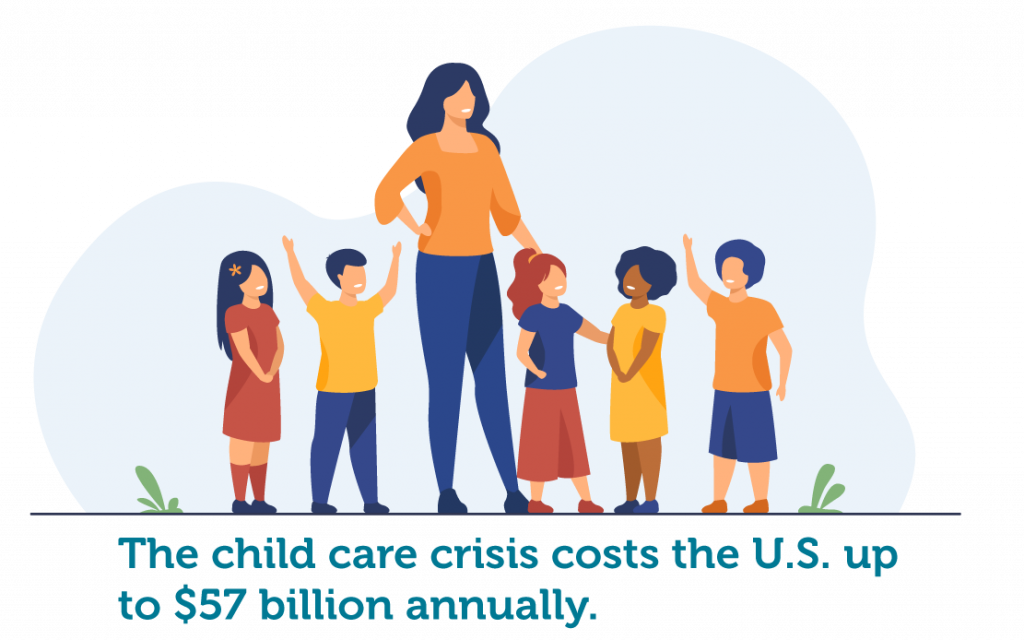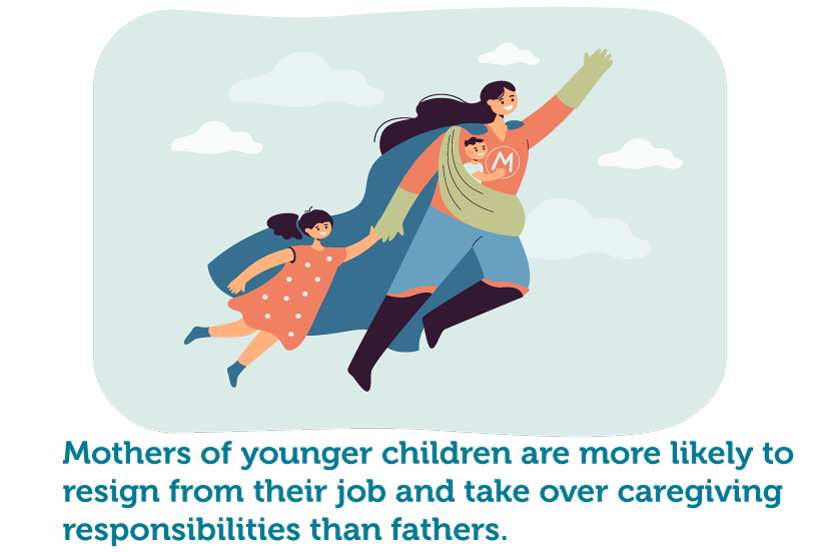
Workplace Wellness Trends Report for 2023
Whether it’s through the use of technology, a focus on mental health, or a greater emphasis on DEI efforts, these workplace wellness trends provide exciting opportunities for businesses.


CEO and Founder of Breadnbeyond

Co-Founder of Milkwhale

Digital Marketing Manager of Explainerd
Working parents make up a substantial portion of the workforce.
Recent data reveals that in 2021, 71.2% of mothers with children under 18 were working or actively looking for a job, compared to 92.5% of fathers. Additionally, mothers of younger children were less likely to work than those with older kids, hinting at the importance of child care benefits, especially for women in the workplace.
With the COVID-19 pandemic, this narrative weathered many changes.
Due to the lack of child care assistance, parents could not juggle between kids and work like they used to. As a result, many had to reduce working hours or quit their job altogether.
Pre-pandemic child care as an employee benefit was already a pressing matter for companies and their workers. But the post-pandemic workforce revealed the scope of it.

Research shows that the child care crisis costs the U.S. up to $57 billion annually.
Unsurprisingly, working parents had to balance many responsibilities, which resulted in reduced productivity and retention.
Even with federal and state funding, employers still play a crucial role in keeping parents in the workforce and boosting the economy. But the positive outlook is that some companies took notice and started implementing child care assistance.
Using the latest data and expert opinions, Shortlister explores the extent of it and what these benefits mean for working parents and their employers.
Employers include child care as a work benefit for their employees to relieve some of the stress of parental caregiving.
These have become very popular among the workforce and job seekers and can make a difference for the company and its current and potential employees.
However, such benefits are not limited to businesses but also expand to organizations and government funds offering assistance, usually to low-income families.
There are many benefits, ranging from flexible working schedules and paid leave to on-site care facilities or flexible spending accounts.
Nonetheless, the main goal of child care benefits, regardless of their type or provider, is to help families juggle multiple responsibilities in the best possible way.
After all, having a full-time job while raising a child can be a real challenge, and working parents could use all the help they can get. So, it did some real damage when the pandemic enforced restrictions and closed schools, after-school programs, child care, and even summer camps.
Some parents, especially those with younger children, had to choose between a career or their family, while some had no choice at all.
But the pandemic didn’t create the problem.
It’s just brought more attention to the importance of comprehensive and reliable child care benefits for employees.
Although some companies still have a long way to go, acknowledging the need is an excellent start. And by introducing child care support for employees, employers can maintain a positive work environment, which is a massive factor in keeping productivity up and reducing turnover rates.

Companies like Netflix, Amazon, and Adobe pay close attention to their employees’ needs.
To relieve some of the stress of caregiving, Netflix has a lengthy parental leave policy for both new mothers and fathers, allowing them to take as much time as they need during the first year of parenthood.
On the other hand, Adobe focuses on providing a wide range of child care support services, such as resources, discounts, and school programs.
Another great example is Amazon’s FamilyFlex program.
The company launched the program in 2021 as a way to provide flexibility to their employees and a better work-life balance, with an emphasis on new parents. FamilyFlex offers free access to a network of caregivers, memberships, tuition discounts, etc.
These examples, followed by others like Cisco, Citibank, and Intel, are some of the many companies that offer child care benefits and extensive employee support in-house or through backup child care support businesses.
Employers are starting to realize the necessity of child care support and parenting assistance for their employees. But there’s still so much to be done.
Digital Marketing Manager at Explainerd, Natasha Rei, explains: “There’s a perfect phrase for this: it takes a village to raise a child. That means it needs a whole system to make the future of child care bright. You can’t put all the burden on the parents or the extended family.

One of the biggest challenges with child care is that it’s a significant expense for families. In lack of a consistent federal law, when the employer doesn’t provide such benefits, the financial weight falls entirely on the parent.
Some government programs provide assistance to help struggling parents cope with child care responsibilities.
There are several options to cover child care fees. But each program and eligibility is different. Some have income requirements, while others might be based on the location.
Employer and government-funded support aside, parents who require child care support can also turn to local organizations.
Some nonprofits and individual providers that focus on parents and their children’s well-being can offer assistance through scholarships or reducing fees for child care. In some cases, colleges and universities could also be a provider of these benefits on campus, for employees but also for their students.
Organizations and other child care providers can offer a range of benefits and assistance. Discounts on education, facilities, and other caregiving resources are a popular option among employers.
For example, Aflac, a Fortune 500 company, offers its employees discounted on-site daycare at its headquarters, but also to parents working remotely. Another great case in point is Intel, which enables discounts on early childhood education.
However, parents can also opt for more specific cost deductions, like sibling or military discounts.
Child care statistics reveal that over the past 20 years, child care costs have nearly doubled while wages have remained stagnant.
The lack of affordable child care has been an issue before the pandemic. However, once workers started returning to the office, some schools and child care facilities remained closed, creating an additional barrier for working parents.
Even more so for women in the workplace.
According to some of the latest data, mothers of younger children are more likely to resign from their job and take over caregiving responsibilities than fathers.
A Century Foundation analysis found that this disruption costs parents of children under five up to $13 billion in lost income every year. Moreover, approximately 50% of working parents believe they can’t give their 100% at work.
So, the high cost of child care, coupled with the pressure it puts on working parents and its long-term effects on employee productivity and retention, is why we need to look closely at the importance of child care benefits for parents.
Seeing the negatives, it’s easy to conclude that the advantages of a good child care program and assistance could result in higher productivity and job satisfaction in the workplace.
When employees feel supported by their employer, they are more likely to stay loyal to the company, thus increasing retention rates. With on-site daycare facilities, parents can feel more involved in their children’s day, and a more extended parental leave can give working parents more time to adjust without feeling pressured.
Ultimately, it’s not a question of whether employers should offer child care benefits but which type would be most beneficial for their employees.

During the COVID-19 restrictions, the U.S. labor market suffered significant changes. Pew Research Center released data revealing that only between February 2020 and February 2021, 2.4 million women and 1.8 million men left the workforce.
The “Great Resignation” affected working parents like any other employee. But for them, it wasn’t so much resignation as a “negotiation” process.
Simply put, parents are leaving their jobs in search of better ones.
In fact, one report shows that up to 40% of parents are open to or actively seeking new employment. More importantly, 81% agree with the importance of child care assistance in the workplace, and more than half of the respondents would stay with what their current employer offers them.
It turns out that providing child care as an employee benefit is becoming imperative to retaining but also hiring talent. However, one study shows that roughly 30% of employees get to enjoy them.
With such high demand and low supply, employers can use child care support as an opportunity to attract talent, reduce turnover and create an impact in the workplace moving forward.

Child care shouldn’t be a burden to parents.
Yet, when the COVID-19 pandemic hit, many found themselves in a difficult position, choosing between being full-time employees or full-time caregivers.
Natasha Rei from Explainerd describes child care as a business of its own: “Without a great collaboration between parents and the bigger support system like the government, child care will make a huge issue in the long run.”
And as an existing crisis that goes way back before the pandemic, it’s time for all parties involved to take measures and provide this much-needed support system to parents.
Although there’s still a long way to go, a favorable outcome is that employers are beginning to realize how impactful child care benefits are for their workers and their business. So, it’s safe to say that the future for parents looks bright.
Browse our curated list of vendors to find the best solution for your needs.
Subscribe to our newsletter for the latest trends, expert tips, and workplace insights!

Whether it’s through the use of technology, a focus on mental health, or a greater emphasis on DEI efforts, these workplace wellness trends provide exciting opportunities for businesses.

Explore senior care statistics that accurately depict the growing importance of eldercare

Discover 25+ insightful statistics about walking and its impact on health and well-being.

Understand the key differences between a fixed and a growth mindset to foster a culture of development and adaptability at work.
Shortlister Connect is a tool specifically designed to be utilized by the HR and Procurement/Sourcing teams within mid-size, large and jumbo employers. Shortlister Connect allows these teams to efficiently research & identify their optimal vendor partners, track existing vendor relationships & performance and “connect” with other employers to share successes and vendor experiences.
If you are not on the HR or Procurement/Sourcing team within an employer with over 200 employees, you will not be granted access to Connect. Examples of individuals that would not be granted access include, but are not limited to: vendors, students, practitioners, researchers, other non-employers or anyone that is unwilling to identify themselves will not pass our vetting criteria. If you are a consultant, Shortlister offers a specialized product for consultants, called Shortlister Select. You can email Tom Ciccotti at tciccotti@myshortlister.com to learn more about Shortlister Select.
***Shortlister retains the exclusive right to grant or deny access to any party to ensure the privacy of the vendors in our system.
Please login with your LinkedIn Credentials
Used by most of the top employee benefits consultants in the US, Shortlister is where you can find, research and select HR and benefits vendors for your clients.
Shortlister helps you reach your ideal prospects. Claim your free account to control your message and receive employer, consultant and health plan leads.